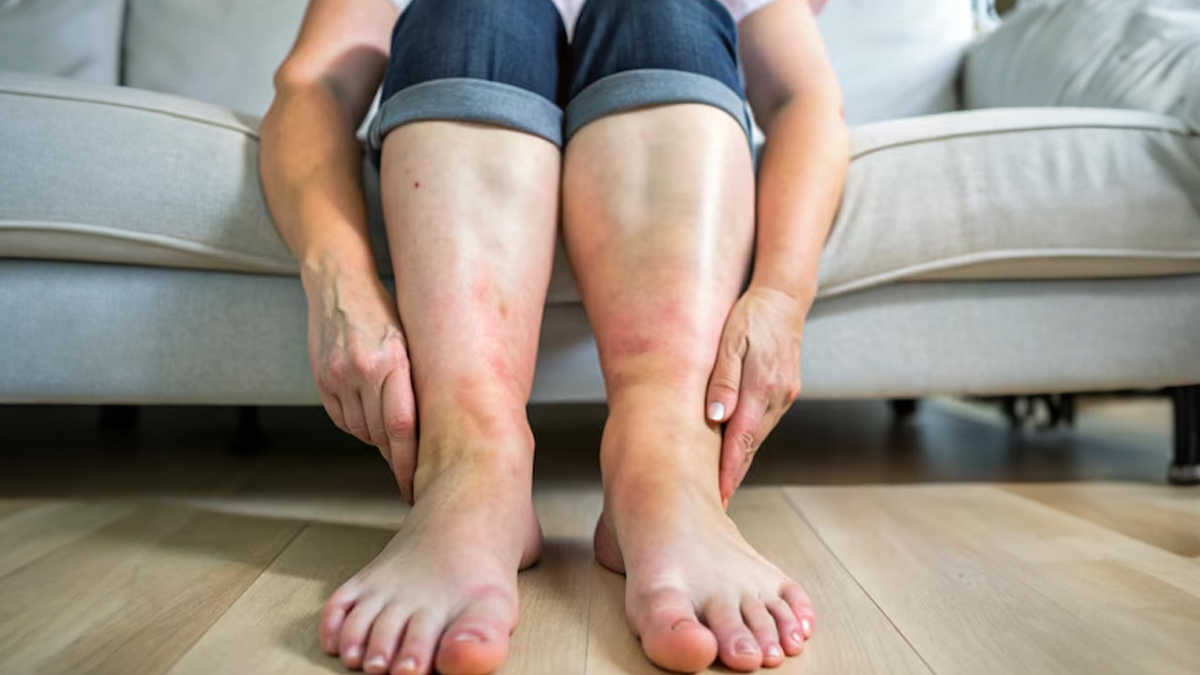-1744789473520.webp)
Imagine coming home after a long day, only to notice your feet and ankles are swollen. While occasional swelling might seem harmless, persistent or unexplained swelling could be a sign of an underlying health issue. This condition, known as pedal oedema, is more common than you think and can range from mild discomfort to a symptom of serious medical problems. Understanding what pedal oedema is, its causes, symptoms, and treatments can help you take the right steps toward better health.
Table of Content:-
What is Pedal Oedema?![pedal Oedema 2 - 2025-04-16T131027.957]()
Dr Prathik Hegde, Consultant Orthopaedic, Bangalore Hospitals, Bangalore, explains that pedal oedema is a condition characterised by the accumulation of fluid in the tissues of the feet and ankles, leading to noticeable swelling. “Pedal oedema can affect one foot or both and is often a sign of an underlying health issue,” he says.
This swelling occurs when small blood vessels leak fluid into surrounding tissues. The excess fluid builds up in the lower extremities due to gravity, especially after prolonged standing or sitting.
Common Causes of Pedal Oedema![Pedal Oedema causes 4 (15)]()
Pedal oedema can result from various factors, including:
- Gravity: Prolonged standing or sitting can cause fluid to pool in the lower extremities.
- Cardiac Problems: Heart failure reduces the heart’s ability to pump blood effectively, leading to fluid leakage into tissues.
- Renal Issues: Impaired kidney function disrupts fluid balance in the body.
- Liver Pathology: Liver conditions decrease protein production, causing fluid to leak into tissues.
- Pregnancy: Hormonal changes and increased pressure on veins during pregnancy can lead to physiological pedal oedema.
- Infections and Inflammation: Injuries or infections like cellulitis can cause localised swelling.
ALSO READ: Is Swelling In The Feet A Sign Of Heart Failure? Here’s When To Be Concerned
Symptoms of Pedal Oedema
The most noticeable symptom of pedal oedema is swelling in the feet and ankles. Other symptoms include:
- Skin tightness or shininess
- Indentation when pressing on the swollen area (pitting oedema)
- Discomfort or pain in the affected areas
- Difficulty wearing shoes due to swelling
How is Pedal Oedema Diagnosed?![Pedal Oedema symptoms 1 - 2025-04-16T131034.348]()
Diagnosis begins with a physical examination and patient history. Doctors may use additional tests such as:
- Blood Tests: To assess kidney, liver, and heart function.
- Urinalysis: To evaluate kidney health.
- Imaging Studies: Ultrasound or Doppler scans help detect blood flow abnormalities or blockages.
Dr Hegde emphasises that identifying the underlying cause is crucial for effective treatment.
Scientific Insight: Pedal Oedema and Heart Failure
A study published in The Multiethnic Study of Atherosclerosis (MESA) found that 28% of participants with pedal oedema showed associations with abnormal cardiac structure and natriuretic peptide levels, markers linked to heart failure risk. The study highlights that persistent pedal oedema may indicate early heart failure in community-dwelling adults.
Is Pedal Oedema Dangerous?
While pedal oedema itself is not life-threatening, it often signals an underlying problem that requires attention. Dr Hegde explains, “Pedal oedema needs investigation to identify its root cause. Sudden swelling with pain, redness, or warmth could indicate a serious issue requiring prompt medical care.”
Treatment Options for Pedal Oedema![Pedal Oedema treatment 5 (7)]()
Treatment depends on the underlying cause but may include:
- Elevating legs above heart level
- Reducing salt intake
- Regular exercise to improve circulation
- Diuretics (water pills) are prescribed cautiously under medical supervision.
- Wearing compression socks improves blood flow and reduces swelling.
- Treating heart, kidney, or liver diseases alleviates pedal oedema.
Dr Hegde advises seeking medical attention if swelling persists despite self-care measures or is accompanied by symptoms like shortness of breath or chest pain.
ALSO READ: What Is The Main Cause of Corns on Feet? Expert Shares the Prevention Tips
Conclusion
Pedal oedema is not a disease but rather a symptom that can stem from various health conditions. Recognising its causes and symptoms early can help prevent complications and ensure timely treatment. If you notice persistent swelling in your feet or ankles that doesn’t improve with rest or lifestyle changes, consult a healthcare professional for proper evaluation.
Also watch this video
Read Next
Fitness Food: Expert Explains Why Pistachios Are A Great Pre-Workout And Post-Workout Snack
How we keep this article up to date:
We work with experts and keep a close eye on the latest in health and wellness. Whenever there is a new research or helpful information, we update our articles with accurate and useful advice.
Current Version

-1744789637477.jpg)

-1744789773697.jpg)